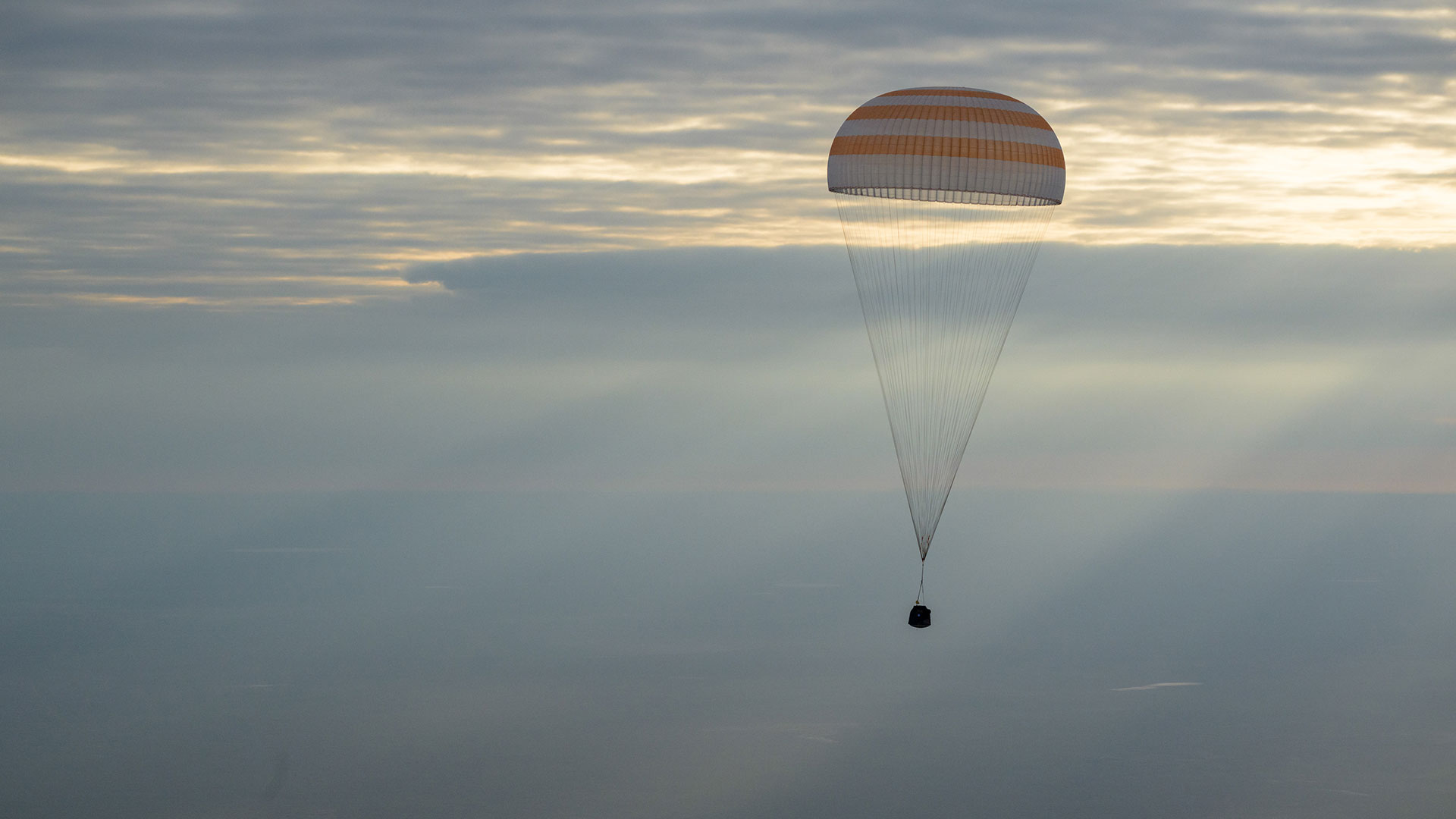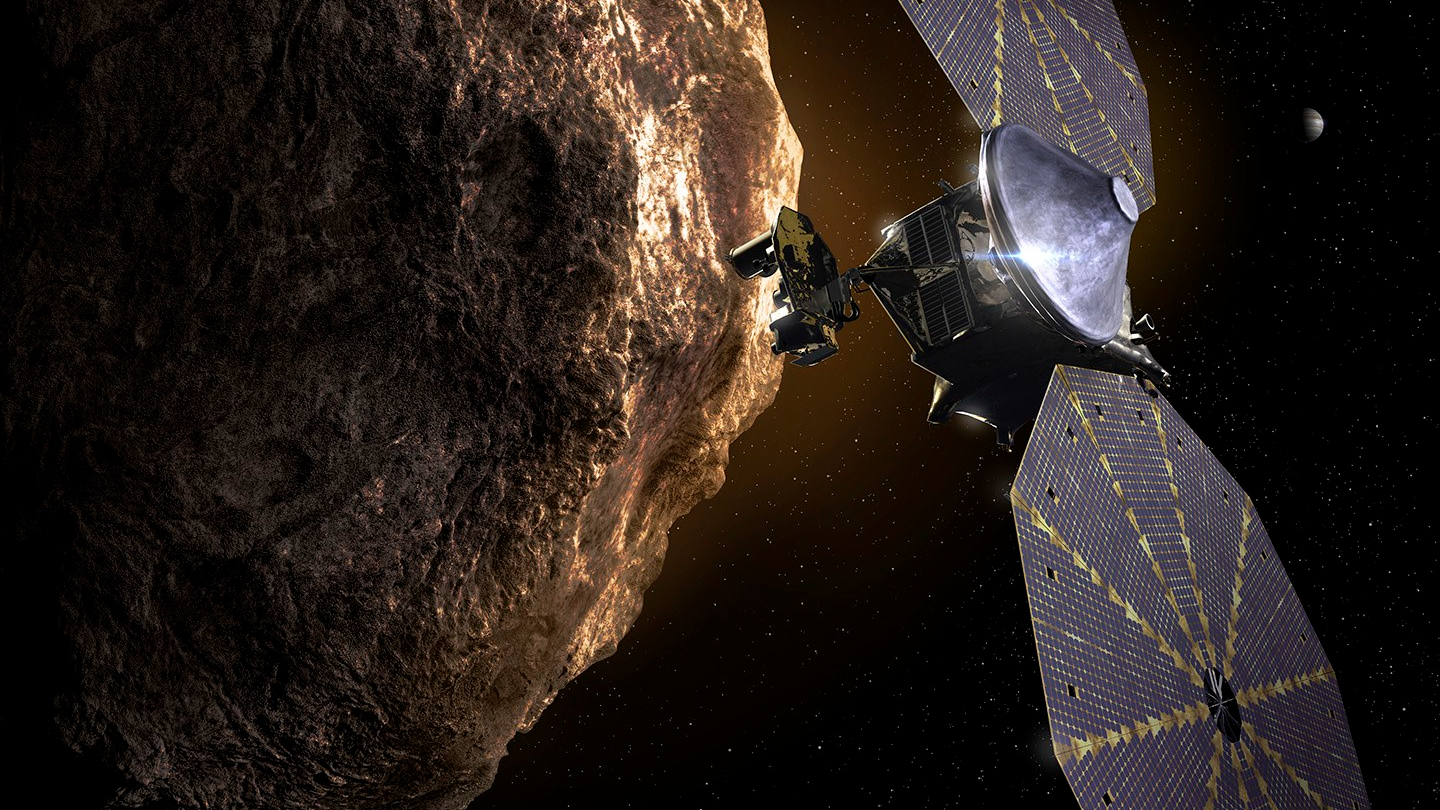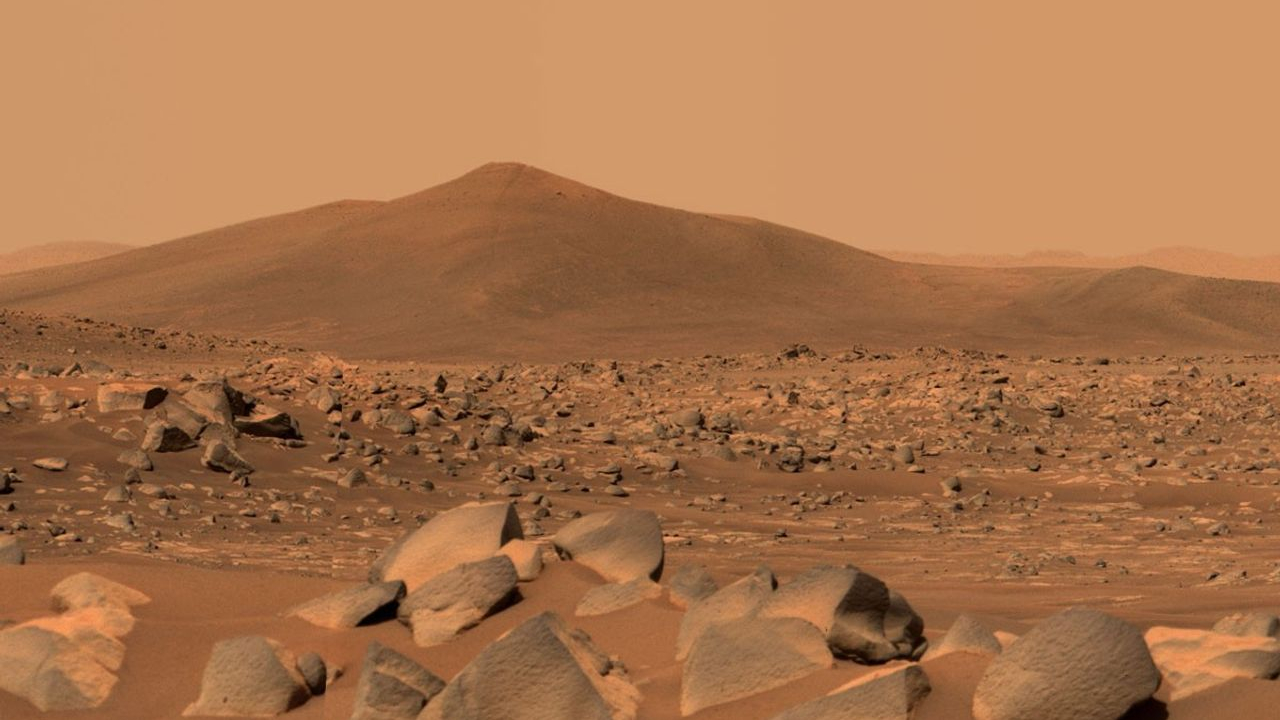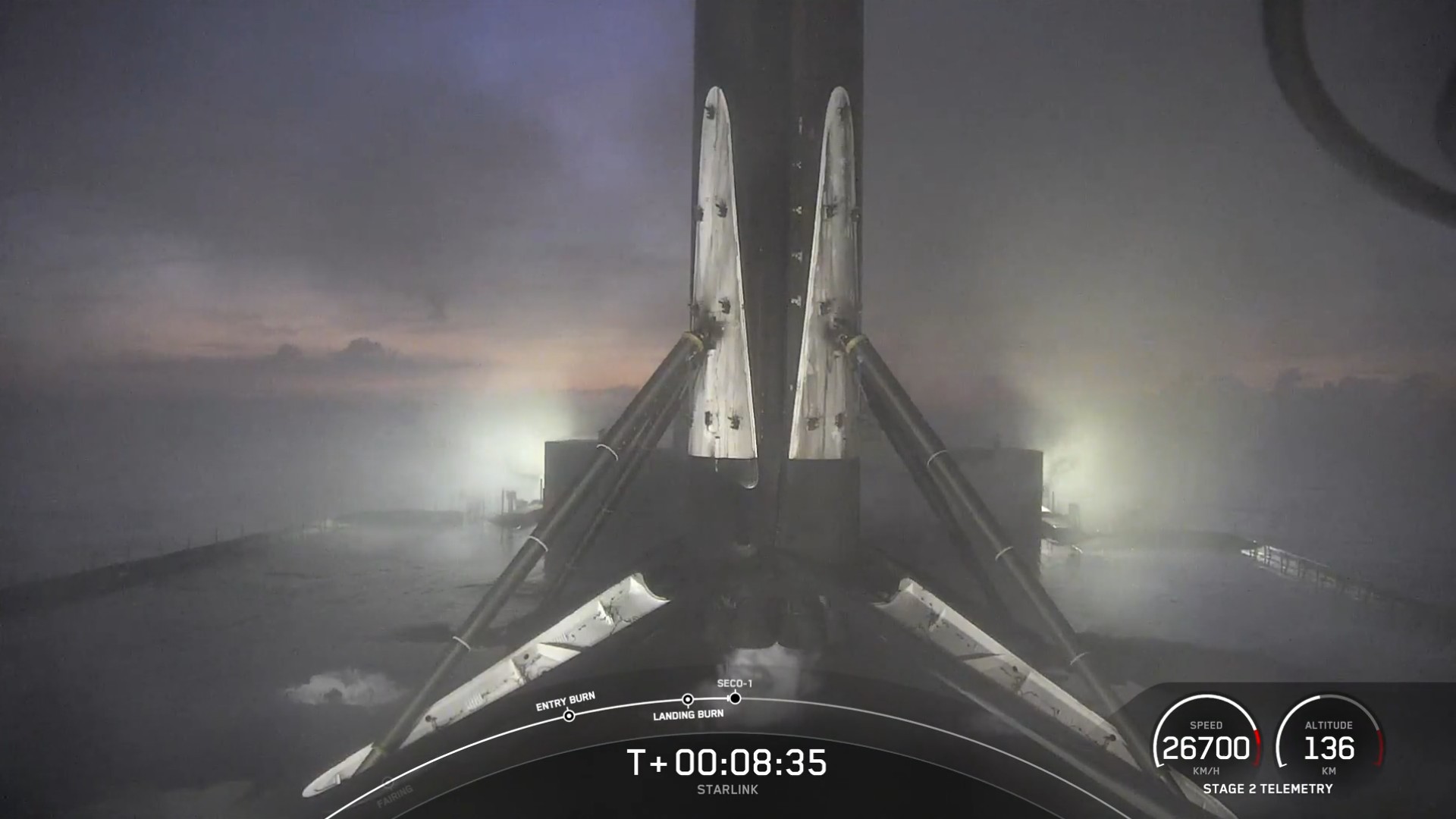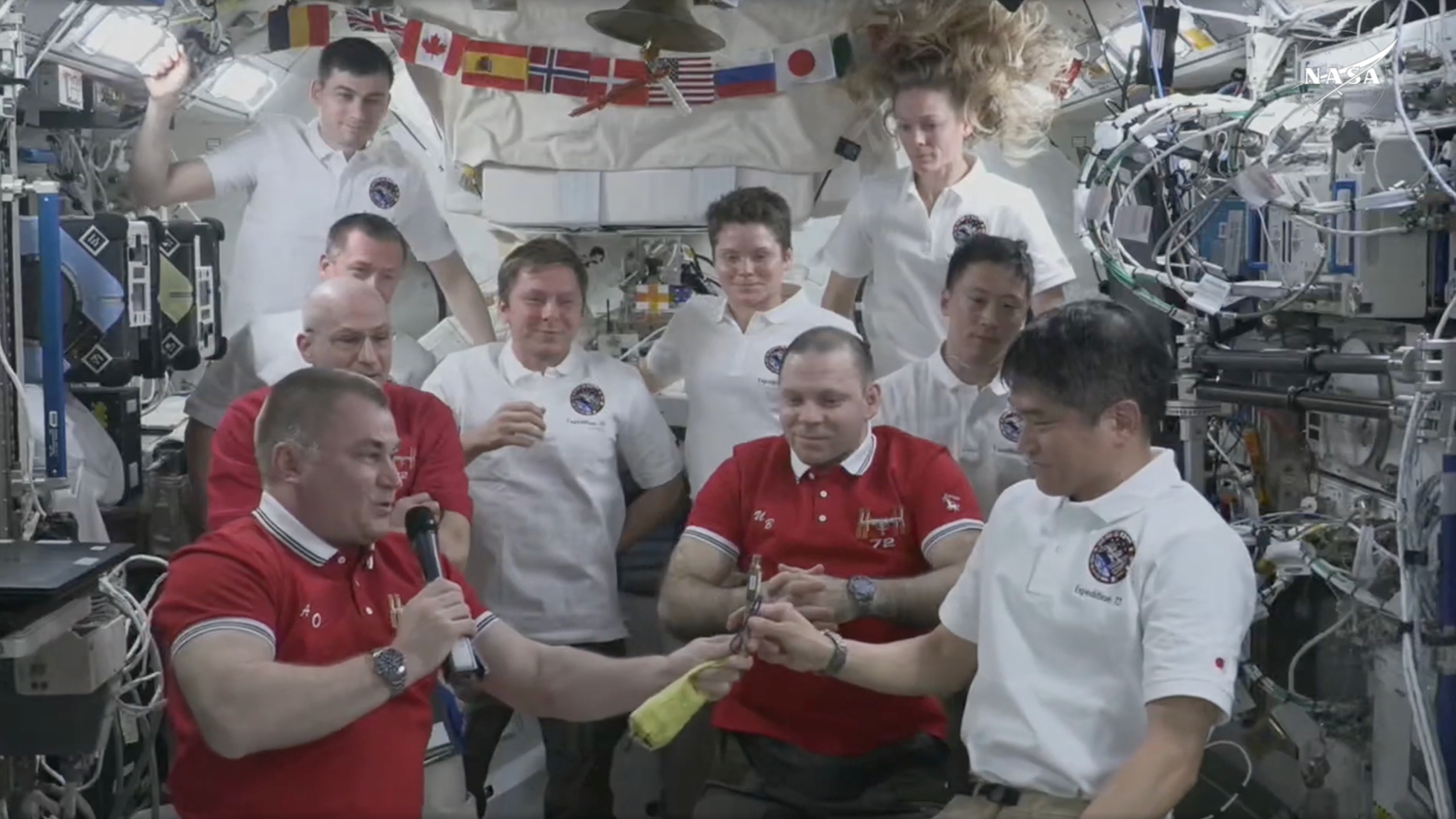Watch as NASA's Cassini Speeds Past Saturn's Rings in This Awesome View

Saturn's famous rings streak by in a gorgeous new video captured by NASA's Cassini spacecraft.
Cassini took the 21 photos that make up the video in a 4-minute stretch on Aug. 20, during the probe's latest plunge between Saturn's cloud tops and the planet's innermost rings. Cassini has been performing such dives every 6.5 days since late April, during the "Grand Finale" phase of its venerable mission.
"The entirety of the main rings can be seen here, but due to the low viewing angle, the rings appear extremely foreshortened," NASA officials wrote in a description of the video. [Latest Saturn Photos From NASA's Cassini Orbiter]
"The perspective shifts from the sunlit side of the rings to the unlit side, where sunlight filters through," they added. "On the sunlit side, the grayish C ring looks larger in the foreground because it is closer; beyond it is the bright B ring and slightly less-bright A ring, with the Cassini Division between them. The F ring is also fairly easy to make out."
The Cassini Division is the 3,000-mile-wide (4,800 kilometers) gap between Saturn's A and B rings. It was discovered in 1675 by the Italian-French astronomer Giovanni Cassini, who also lent his name to the Saturn spacecraft.

The $3.2 billion Cassini-Huygens mission — a joint effort of NASA, the European Space Agency and the Italian Space Agency — launched in October 1997 and arrived in orbit around Saturn in July 2004. (The Cassini mothership carried a lander called Huygens, which touched down on Titan, Saturn's largest moon, in January 2005.)
Over the past 13 years, Cassini has beamed home countless amazing images of Saturn and its many moons and has made discoveries that are reshaping researchers' understanding of the solar system and its potential to host life. For example, Cassini spotted seas of liquid hydrocarbons on Titan and saw geysers of water vapor blasting from the south pole of Titan's fellow Saturn moon Enceladus.
Get the Space.com Newsletter
Breaking space news, the latest updates on rocket launches, skywatching events and more!
Cassini team members have determined that this water is coming from an ocean buried beneath Enceladus' ice shell that may be capable of supporting life as we know it.
But the flood of information from Cassini will dry up soon. The spacecraft is running low on fuel, so the orbiter will dive into Saturn's cloud tops on Sept. 15, burning up in a suicide maneuver designed to make sure the spacecraft doesn't contaminate Titan or Enceladus with microbes from Earth.
Follow Mike Wall on Twitter @michaeldwall and Google+. Follow us @Spacedotcom, Facebook or Google+. Originally published on Space.com.
Join our Space Forums to keep talking space on the latest missions, night sky and more! And if you have a news tip, correction or comment, let us know at: community@space.com.

Michael Wall is a Senior Space Writer with Space.com and joined the team in 2010. He primarily covers exoplanets, spaceflight and military space, but has been known to dabble in the space art beat. His book about the search for alien life, "Out There," was published on Nov. 13, 2018. Before becoming a science writer, Michael worked as a herpetologist and wildlife biologist. He has a Ph.D. in evolutionary biology from the University of Sydney, Australia, a bachelor's degree from the University of Arizona, and a graduate certificate in science writing from the University of California, Santa Cruz. To find out what his latest project is, you can follow Michael on Twitter.


